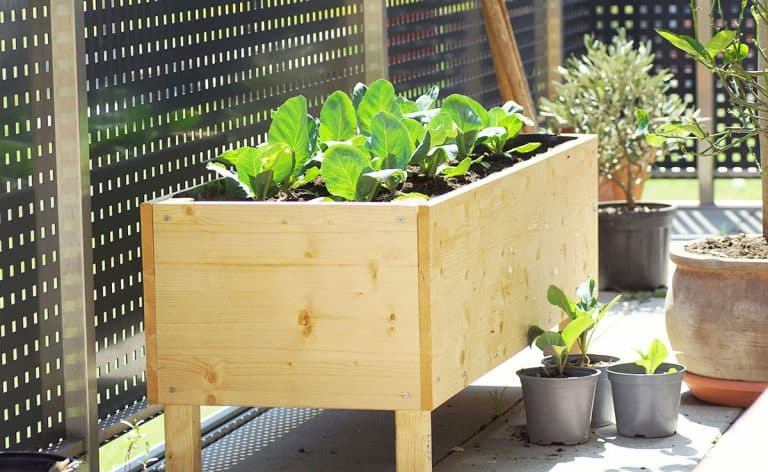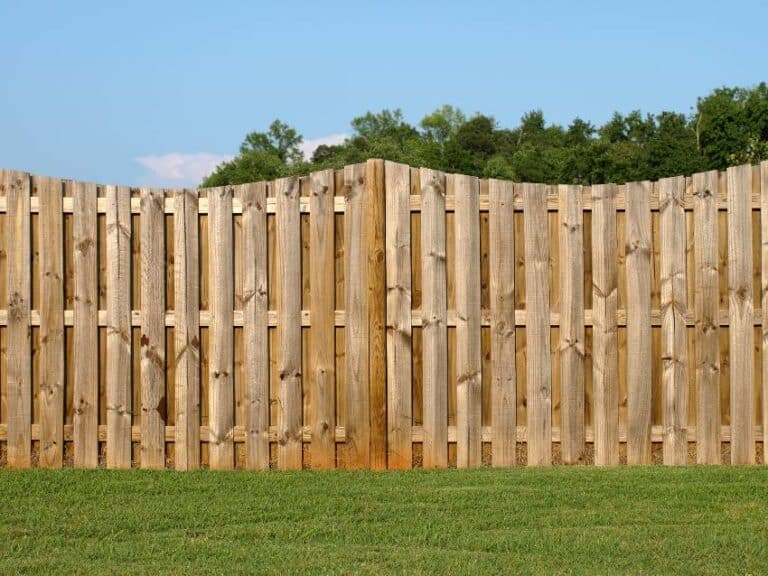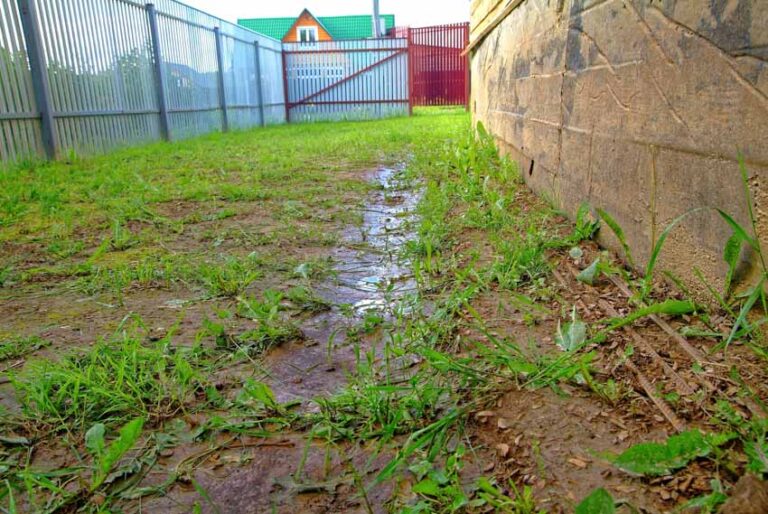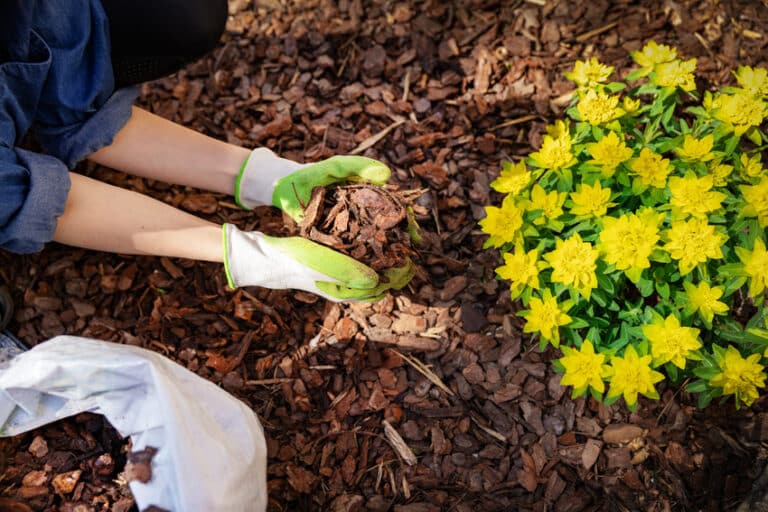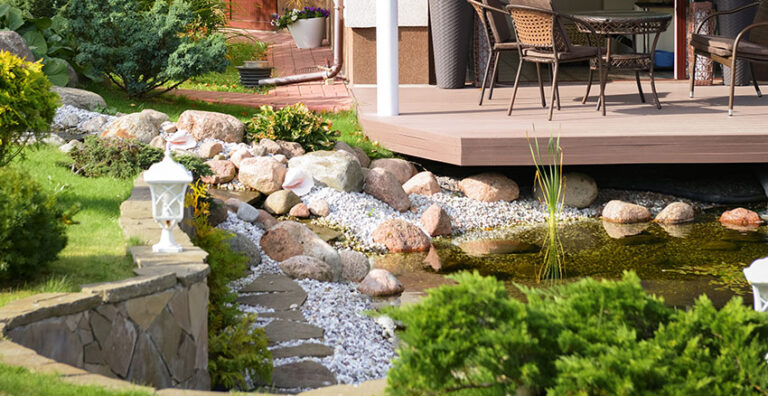Landscaping With Sand (Types & Design Gallery)
Landscaping with sand is a versatile landscaping medium with tons of potential. Of course, everything great about it is how you picture going to the beach: it lightens up the place, offers a soft and inviting texture, and even manages to make it home with you somehow.
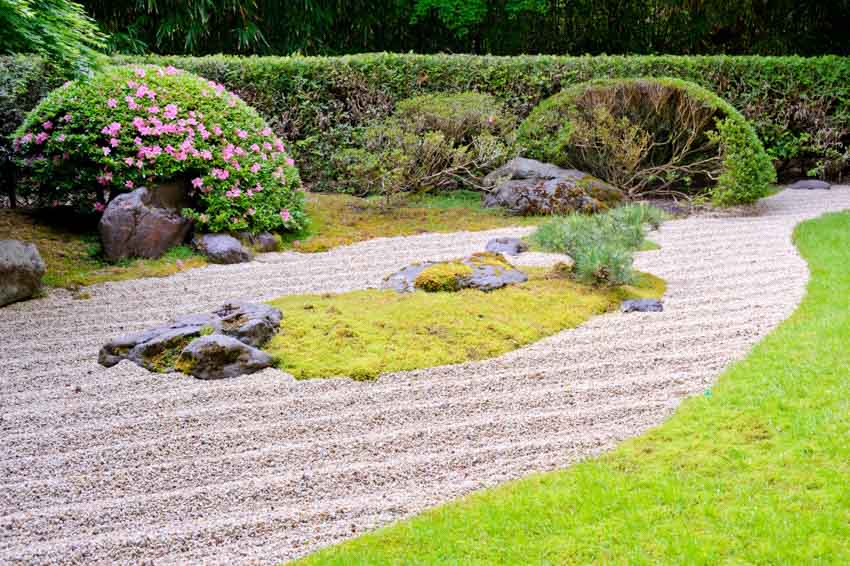
Nevertheless, why leave this material at the beach when you can use it in your own backyard? It serves many purposes, looks fantastic, and is fairly easy to maintain if you own a rake. It’s also used in conjunction with other landscaping elements.
You’ve been missing out if you never thought it could be so handy. The possibilities are nearly endless; from serving as a foundation to being the icing on the cake (or zen garden), there’s a spot in every project for it.
Here, we’ll talk about some of the most practical and creative uses, from filler to backyard oases. The information here can help you to decide what type of project is best for you and what type to use for the job.
Types Of Sand For Landscaping
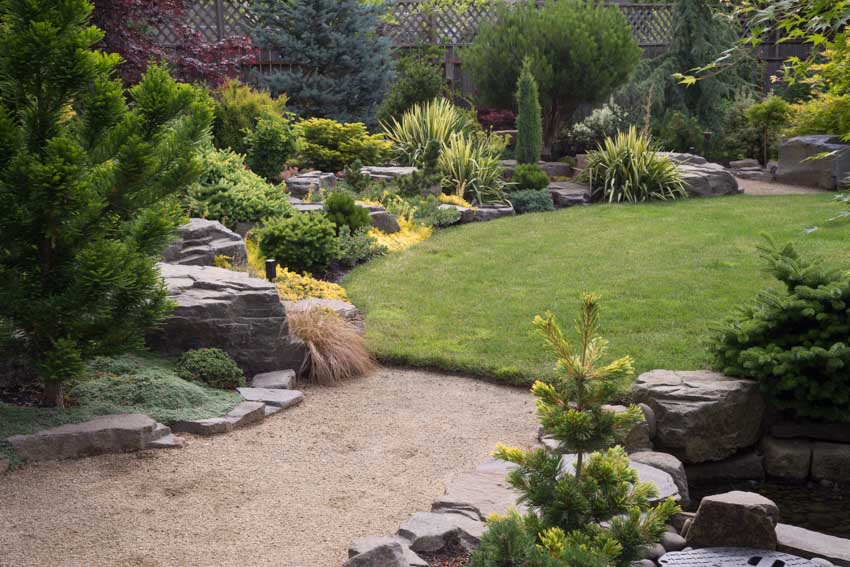
Despite what every movie ever has taught you, not all sand is the perfectly clean, off-white dream it’s made out to be. There are lots of different types for different projects. However, using the right variant for a job is important, especially if it’s used for building or beautifying.
To help sort out which is which, we’ll cover the common types found at your local home and garden store:
• Utility: This type lives up to its name. It can be used for creating solid, level foundations for pavers and concrete, for filling between bricks, and even as a filler for unlevel ground, potholes, and flowerbeds.
Utility is a far cry from the soft, light-colored type you’re used to seeing in sandboxes, but the coarse nature of utility makes it convenient for heavy-duty applications. It’s the go-to choice for the game of horseshoes.
• Masonry: Typically used in concrete applications, masonry gets its name from where it’s used. This type has a cleaner, more aesthetic appearance than utility.
It’s most commonly used where it looks nice, such as outdoor types of patios, driveways, and even garden paths. Masonry usually looks a little on the lighter side, with colors ranging from beige to light gray.
• Beach: This is the stuff of Hollywood; beach is usually pure, fine-grained and very lightly colored. Its bright appearance makes it perfect for creating sandboxes, outdoor play areas, and even zen gardens.
Easy to manage and clean, beach is tons of fun to use in all sorts of projects. It can even be used in fountains and swimming pools! It also looks fantastic as a top dressing for potted plants, both indoor and out, and can help with pest control.

• Polymeric: Polymeric is more of a sand compound rather than one type of granule in bulk. Composed of granules of sand, along with other additives like adhesives, polymeric is used primarily for masonry work, such as paver patios and retaining wall structures.
It is typically mixed with water to activate the adhesive additives, then applied much like concrete to form a solid filler. This type is essentially the grout of the sand market.
• Play: Designed specifically for use in sandboxes, this type undergoes much processing to be deemed safe for children to play in and have continuous exposure to.
It is filtered for dust and potentially harmful contaminants, then goes in for more processing to reduce the granule size.
The difference between play and other types is that it’s much finer, making it softer and easier to clean up.
Another advantage is that in extreme heat, it stays cool due to the granules’ small size; they’re packed so tightly that this type simply reflects the sun’s rays without retaining any of the heat that comes with them.
Landscape Ideas Using Sand
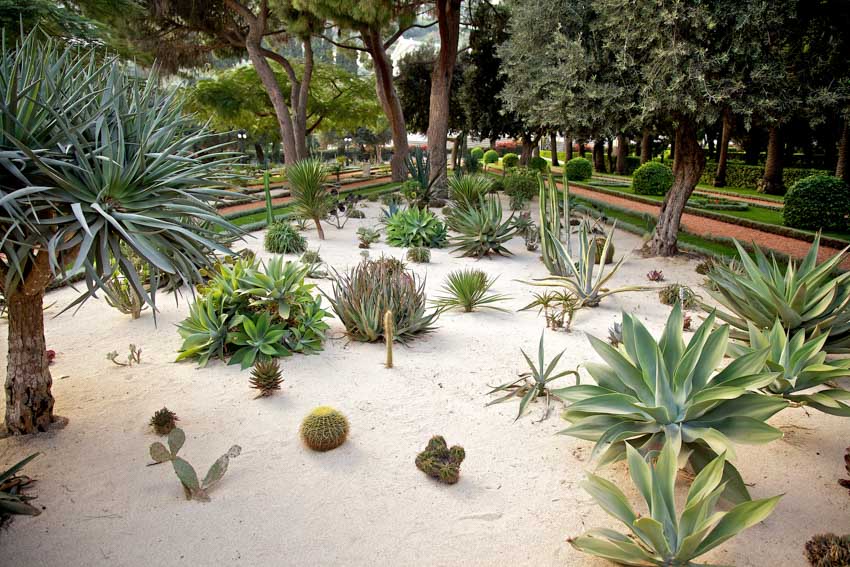
When most people think of landscaping, they think of bark, mulch, grass, and even plain soil. What really strikes those kinds of people as surprising is that sand can look much better than these other options, even in places where it might seem a little out of place.
Mailbox posts, trees, and even fences can look great with a sand ring. Flowerbeds look completely renewed with this material, and even tossing a little onto a patio can bring about that fun, beachy vibe. But what kinds of applications are best for? Here’s a list of some of the best uses for this material:
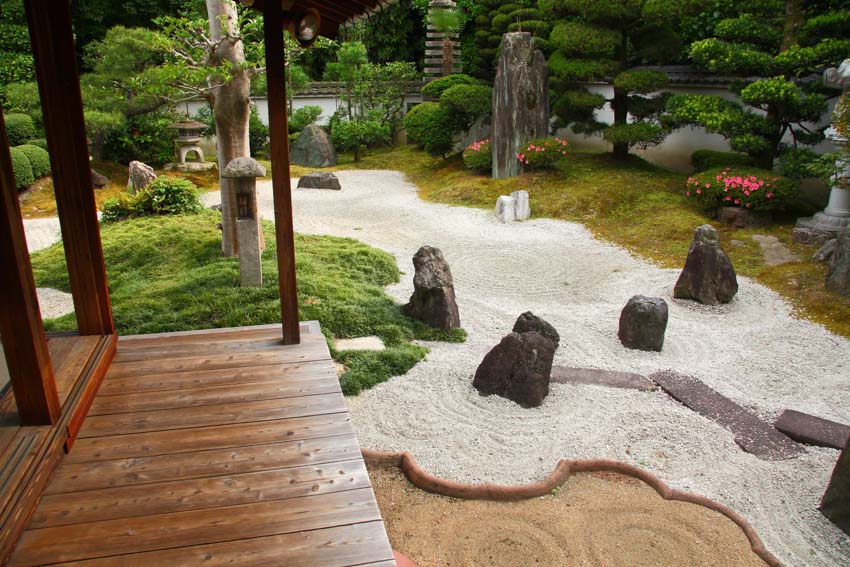
• Japanese garden: Cherry blossoms and vine maples somehow always look stunning paired with sand, and Japanese-style gardens are no exception. In fact, this low-maintenance approach to Feng Shui gardening means little work and lots of fun.
In a typical Japanese garden, this material is used to make the zen garden; a compilation of sand, sculptures, rock formations, or other objects are put together to create an aesthetically pleasing look, not to mention that raking the material into formed lines is super relaxing.
The best type to use for a zen garden is beach sand, but masonry would do in a pinch for smaller areas.
• Backyard beach: Break out the blender and prepare for beach side margaritas because bringing the topics right to your backyard is possible. This landscape style generally includes features such as a sand pool, a beach with lounge chairs, or even bungalows over the water, depending on how much space you have.
Pair these elements with some types of palm trees, and you’ve got the perfect setup for a beach party without ever leaving the house. Masonry is generally used alongside concrete to build sand pools, and can be pretty tricky; it’s best to hire a professional with a large portfolio to help you decide how you want your oasis to look and feel.
• Using sand between pavers: The best type to use for filling between pavers is polymeric. Although this type is much finer-grained than a more general-use option, the particles maintain a jagged appearance, which helps it to stay put for longer.
To apply between pavers, make sure you have a solid foundation underneath your pavers first, then use a broom to sweep piles of this material over the top of pavers until no additional sand can fit into the spaces.
A border can help to keep the material where it belongs, which also helps a paver patio look better for longer. Be sure to mix it with water to activate the added adhesives according to the package directions.
• Children’s play area: What’s better than a swing set? A swing set and a sandbox. Children’s play areas can be made with sand to be much more fun than classic bark or rubber play areas.
One of the major perks of having play areas with this material is that they make for a soft landing for children at play, especially when playground toys are present. It’s also easy to clean and maintain a sand play area with nothing but a rake, and any escaped sand can be easily replaced.
The best variant to use for these types of applications is play, but any type of white or tan sand will look great in a sandbox or a volleyball court.
Is Sand Good For Landscaping?
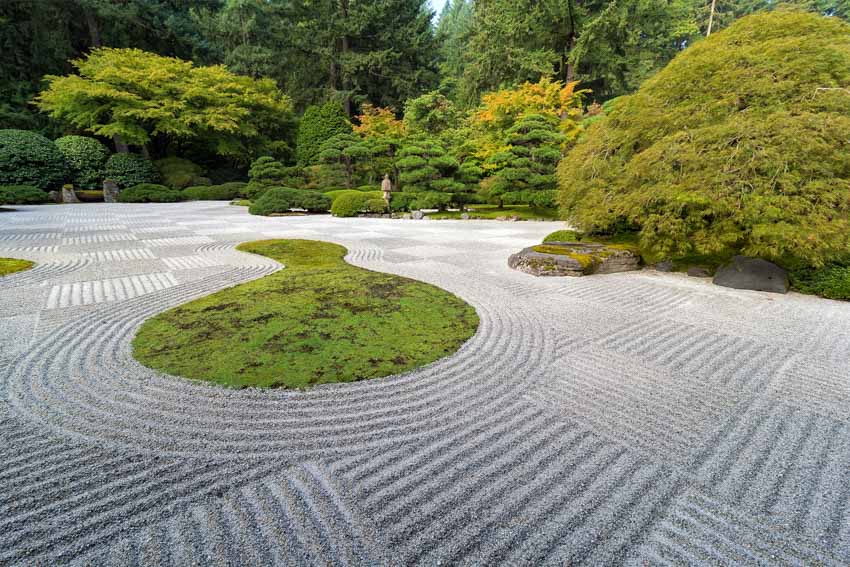
Sand makes a great landscaping material, and several reasons exist. First up is replacing mulch with it, which is among the great desert landscape ideas you can consider.
Some landscaping applications where mulch would normally be used could actually have a much more elevated look with lighter-colored type, rather than a dark mulch.
Flowering shrubs look particularly flattering paired with this material, along with some perennials. Anything that has pops of color will look great with this landscaping element, but it can be used in the garden, as well.
One of the everlasting struggles of having a garden is soil compaction. This leads to poor drainage, and thus, unhealthy vegetables. Adding it to garden soil not only gives it a nicer, cleaner look, but also helps to break up larger chunks of soil.
The use of this material will provide increased drainage and room for new root growth. This application has also been said to reduce soil pests such as slugs, and helps to prevent systemic root rot that can affect an entire garden!
Can You Use Sand As A Ground Cover?
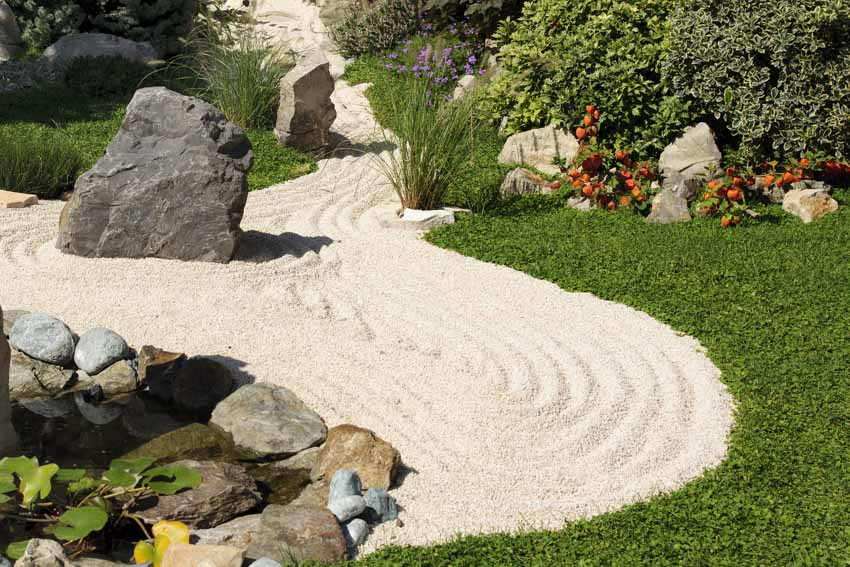
Sand makes a great ground cover, but there are stipulations. Wet climates don’t do well with it as a ground cover, primarily because the constant rain washes this element away quickly and leaves it looking dull and dirty.
Drier and warmer climates, however, can better accommodate this material in landscaping. With a little routine maintenance and cleaning, it can look much better than grass or concrete options. So, as long as the weather permits, it makes a fantastic ground cover.
There are also benefits to using sand for ground cover. The first is that it helps to prevent tunneling pests; think rodents like gophers, moles, and mice. The fact of the matter is that nobody likes a face full of sand, and that includes these little guys, even if they are resilient in your local golf course.
With this material, you’re also likely to see fewer worms, slugs, and snails, so your shrubs are safe from slimy creepy-crawlies. While it won’t keep weeds away, it’s easier to spot- treat them without the concern of killing the surrounding grass or other plants.
What Type of Sand Is Best For Landscaping?
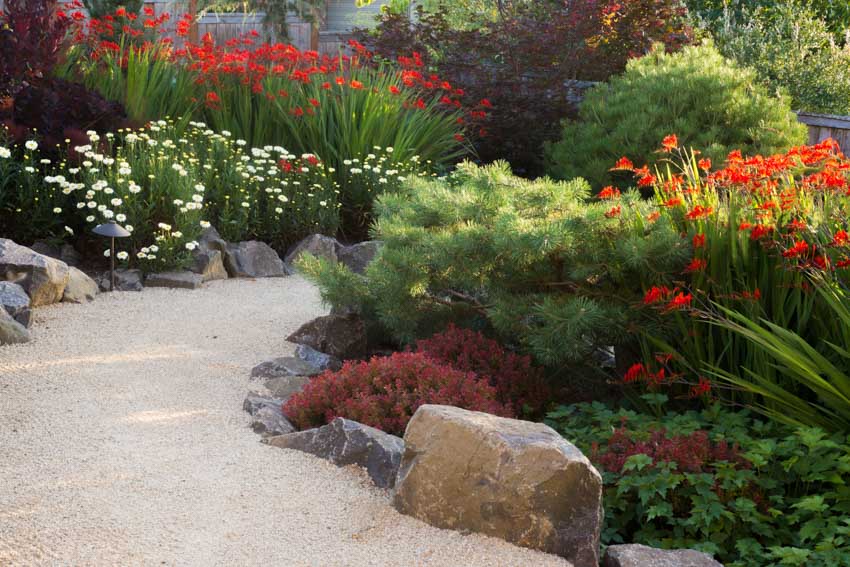
While different types are best suited for different applications, white or beach sand is the most widely available and reasonably priced option for almost all landscaping projects using this material.
While this type is best for replacing mulch, installing play areas, or making a backyard beach, other options are best for other types of projects. For example, if you need to build a paver patio, you’re likely going to end up using more than one type to get the project from start to finish.
Additionally, it’s up to you to decide what type to use for the look you want to achieve. If what you’re after is a grainier look, then utility sand is great. Most stores that sell this material offer a variety of options for colors, applications, and ratings.
If what you need isn’t sold in large quantities at these stores, try searching for a landscaping company that sells and delivers materials for landscaping, such as mulch and gravel. These options may offer less variety, but the varieties they do have will be available for larger projects. See more gravel garden ideas here.
How Do You Get Rid Of Weeds In Sand?
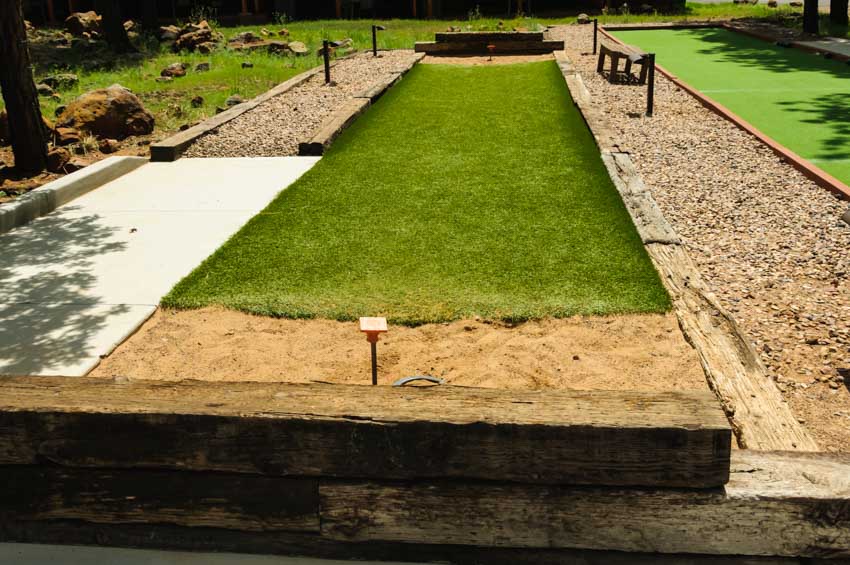
One bummer about using sand in landscaping is that while it looks great, it doesn’t do much in the way of preventing weeds. To remedy this, you can take several steps to remove and prevent weeds from growing.
The first big step is prevention: by preventing weeds from growing, you’re making less work for yourself in the future. You can use chemical weed preventers used for landscaping, but not for playing.
Simply sprinkle and mix in any type of weed control product sold in stores. This will often keep weeds at bay for around six months, but you should still expect a couple to pop up once in a while in less-treated spots that get washed away.
In areas where children would play, or on backyard beaches, weed prevention starts with landscaping fabric. This layer of protection underneath this landscaping material will help prevent weeds from taking root underneath the sand and soil, keeping it flawless for much longer.
However, once weeds do make their way through, the best method is always to dig them out, ensuring that any roots come with them. Then, you can simply cover the spot with additional sand to make it look as if a weed never existed there. Use your best judgment to decide what types of weeding and weed prevention methods work best for your space and what it’s used for.
See more related content in our article about the best gravel backyard ideas on this page.


